Recent Posts
FAQs About Basement Floods
11/14/2024 (Permalink)
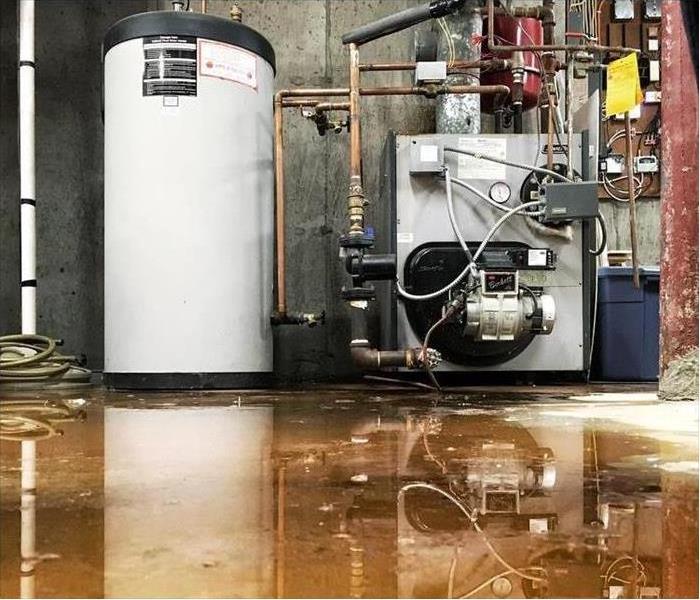 Broken water heater causes flood on basement in Perry, OK
Broken water heater causes flood on basement in Perry, OK
Learn About Flooded Basements
Basements are often great additions to homes, regardless of whether you use your basement in your home in Perry, OK, for storage or for spending time with family. Unfortunately, flooding is a common issue that frequently affects basements. If you have a basement in your home, it can be useful to learn about flooded basements.
What Causes a Basement Flood?
There are various reasons a basement may become flooded. However, some of the most common causes of flooded basements include:
- Natural disasters that cause heavy rains
- A broken water heater
- Damaged supply lines
- Pipe bursts
How Is Water Removed From a Flooded Basement?
Sump pumps and water vacuums are often useful to mitigate small to moderate amounts of water. However, if flooding has caused large amounts of water to enter your basement, you may want to consider contacting water damage restoration professionals. Experts have access to powerful tools and equipment that can remove large amounts of water, and professionals also know how to remain safe when removing contaminated water.
Can You Prevent a Flood in Your Basement?
Since there are various reasons a basement may flood, there is no guarantee that you can prevent your basement from all floods. However, it is possible that you may be able to prevent floods not caused by natural disasters. Ensuring that all appliances and pipes are working effectively and requesting an inspection if you need an appliance or pipe repair can help to prevent a flood. It's also often useful to look for signs of water damage so as to prevent a small problem from turning into a big disaster.
Your basement is an important part of your home, and an area that is particularly prone to water damage from a flood. It's often helpful to know the causes of flooding in basements, how water is removed from a flooded basement and how to prevent a basement flood.
What Does Category 2 Water Damage Mean?
10/16/2024 (Permalink)
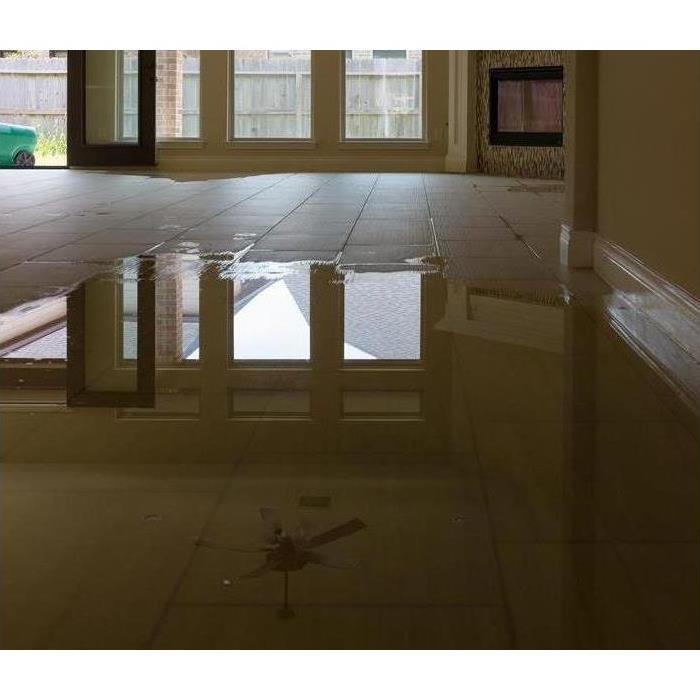 Contact a water damage restoration service in Stillwater, OK, to restore any damage.
Contact a water damage restoration service in Stillwater, OK, to restore any damage.
Category Two water damage involves gray water that may contain bacteria or chemicals but does not contain solid waste. Leaks involving Category Two water may be caused by sewer backups or result from leaks of clean Category One water that calls for water pipe repair becoming contaminated. Learn more about what differentiates Category Two water from clean water and Category Three black water.
Where Does Category 2 Water Originate?
Category Two water often originates as Category One water. For instance, if clean water from a broken pipe sits too long or filters down from one flooded floor through building materials to a lower floor, this water has become Category Two. Shower and toilet water that does not contain solid waste is also considered Category Two.
What Is The Category 2 Cleanup Procedure?
As Category Two water may contain bacteria, it is necessary to disinfect the area affected by a leak. Cleanup should commence with the removal of all water followed by cleaning, disinfection, and thorough drying to reduce risks of infection or mold. Be sure to address the cause of the problem, whether this involves clearing a sewer blockage or water pipe repair.
Do Category 2 Leaks Pose Any Risks?
Category Two water may contain bacteria and pose a risk to persons with compromised immune systems. The major risk with any water leak that originates from a broken pipe or any other source is mold. Thoroughly dry the exposed area, including all porous or semi-porous materials and contents, to prevent mold from starting to grow.
Commercial property owners dealing with a Category Two leak should take steps to fix the cause and prevent the situation from becoming more serious. Schedule a water pipe repair or clear any clogs causing backups and clean and dry the flooded area. Contact a water damage restoration service in Stillwater, OK, to restore any damage. For more information, visit http://www.SERVPROstillwaterguthrie.com/.
Contact a water damage restoration service in Stillwater, OK, to restore any damage.
3 Important Questions to Ask About Commercial Content Cleaning
7/26/2024 (Permalink)
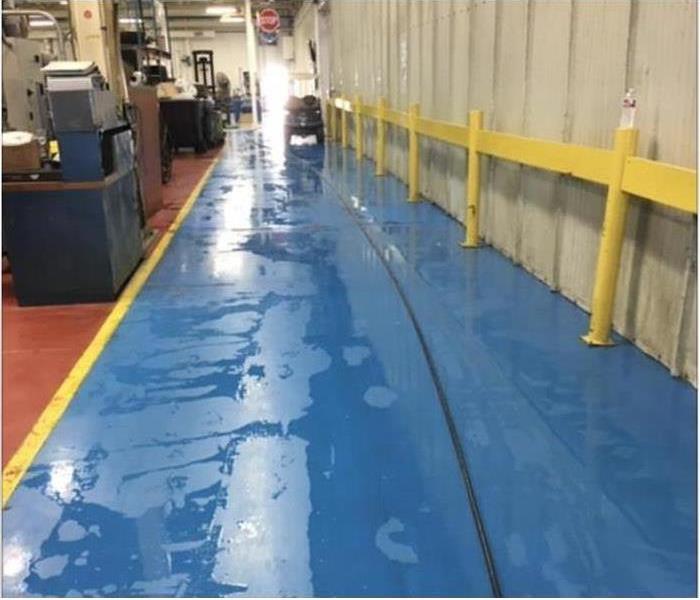 Water damage in a commercial building in Ceres, OK
Water damage in a commercial building in Ceres, OK
3 Questions To Understand About Commercial Content Cleaning
The last thing a business owner wants to deal with is a flooded company. This situation, after all, is both physically and emotionally messy. The establishment in Ceres, OK, must not only be closed, but it must also receive a thorough cleanup, preventing any complications with staff or clients. As proprietors sift through their valuables, they'll need to consider if they can keep something or toss it.
1. How Do You Know What Can Be Saved?
Work with a water restoration company to inspect and review your assets. The experts can look over everything, providing suggestions for what should be done. They'll consider the following points:
- What type of water contacted the piece?
- Is the item porous or nonporous?
- How easily could the owner replace the belonging?
The answers here are vital. As they survey the contamination, the team can provide a plan for you, offering dry cleaning to immersion services. In fact, with their high tech equipment, they can sanitize even electronics and documentation. Don't think all of your hard work has to go to the curb. Discuss the various options available.
2. What Precautions Should Be Used?
A flooded company is a hazard, particularly if the overflow came from a sewer line or external source, such as a lake or ocean. The microbes are seeking residence, growing within the walls and floors. For this reason, extreme caution should be taken to wash anything from the impacted zones. Appropriate personal protective equipment such as masks, gloves and eye wear should be used, preventing germs from spreading.
3. Is Clean Water An Issue?
Even a broken pipe that sprays freshwater is complicated. While it may not contain the microorganisms, too much of it could lead to mold. The major factor would be who easily the scrubbing process could be done. A nonporous substance took in very little, leaving it a simple procedure. Porous pieces, however, are far more complicated. They may not make it.
A flooded company doesn't mean a complete loss. Speak with professionals for guidance.
Essential Information on Mold Growth Following a Flood
7/19/2024 (Permalink)
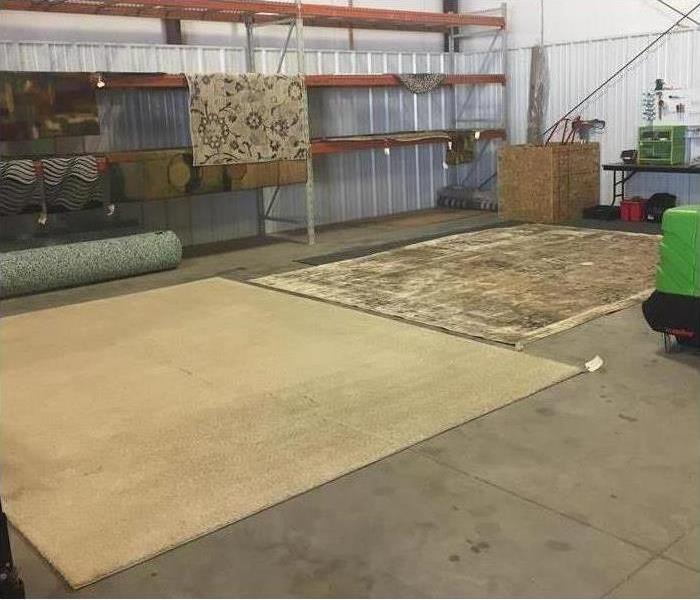 Mold on flooring rugs in Stillwater, OK
Mold on flooring rugs in Stillwater, OK
Mold Growth After a Flood
If your building has been affected by a flood in Stillwater, OK, then you will probably have a lot of damage to deal with afterward. One type of secondary damage that you may notice is mold growth. This is a common problem that occurs after water damage, and the following information may help you handle it properly.
1. Why Does Mold Grow After a Flood?
Flood water can bring bacteria and contaminants, including mold spores, into your building which can contribute to the growth. However, mold will begin to form after any kind of water damage, including that from clean sources. This is because mold lives in most environments, but it needs moisture to grow. Once it has that, it will begin to spread.
2. How Can You Prevent It?
The best thing you can do to prevent the growth of mold is to remove as much moisture from the building as you can. If there is standing water, mold will begin to form within a day or two. Once the water has been removed, dry the building thoroughly. Keeping doors and windows open can help speed up the process. Fans and dehumidifiers are great for this as well.
3. What Do You Do if It Has Already Started Growing?
It is important to dry the building quickly even if mold growth has already formed. However, in this case, the use of items that increase air circulation can end up spreading the fungus throughout the building, so this should be avoided. Protective gear should be worn while the mold is being removed, and the area should be contained to prevent the spores from moving to other areas.
If there is mold growth in your building, you should avoid trying to remove it on your own and instead hire a professional. A cleanup and restoration service can remove the fungus safely and thoroughly without spreading it further. They can also make other necessary repairs to the building as well.
Understanding Black Mold: Key Facts and Information
7/9/2024 (Permalink)
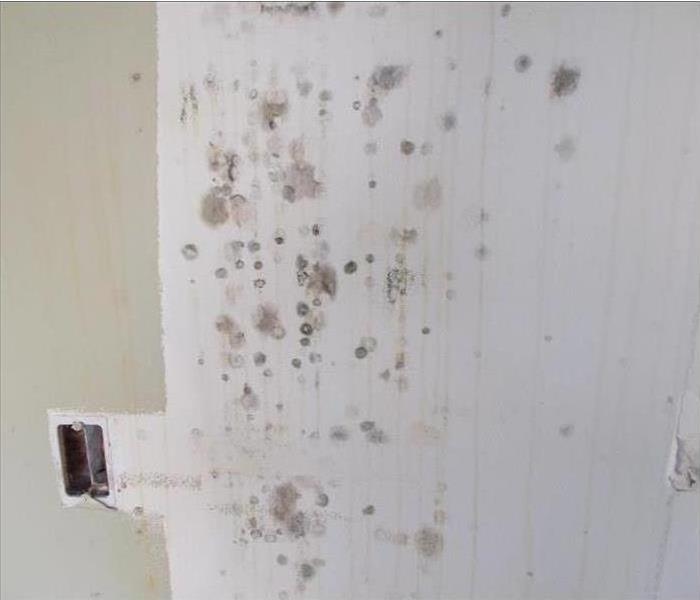 If you have mold issues you should contact professionals to address the issue.
If you have mold issues you should contact professionals to address the issue.
The Facts About Black Mold
Black mold is a type of microscopic fungus that often grows in large quantities. It’s generally found outdoors, but it can also make its way indoors. It reproduces by releasing spores into the air that settle on surfaces, and it quite often appears as an innocent little black, blue or green stain that quickly proliferates.
Ideal Conditions
Mold’s favorite places to reproduce are showers, baths, toilets, kitchens and basements – in other words, places that normally contain the three necessary conditions for it to grow and flourish.
• Water: Moisture from leaks, flooding, condensation and high relative humidity has to exist for spores to grow and reproduce. This is especially true in Navina, OK.
• Food: Like every living creature, spores need food, which they find in organic materials such as cotton, paper, leather and wood.
• Temperature: Optimal temperatures for proliferation must be warm, ranging from between 70 to 90 degrees Fahrenheit.
Mold also likes to proliferate in dusty and dark environments containing stagnant air.
Telltale Signs
It’s not necessarily easy to tell if black mold or other fungi are invading your home because visual signs may be absent. However, a reliable clue could be a whiff of a musty, earthy scent. This specific smell almost always guarantees mold, especially if you’ve suffered a leak or flood that hasn’t dried out properly.
Control of the Problem
Since mold requires some form of water to propagate, the best way to keep it from trespassing is by solving any indoor moisture problem with the help of a knowledgeable and reliable company. If mold cleanup is necessary, or if you suspect the fungus will invade at any moment, rest assured that you can rely on professionals located in Navina, OK, to take care of your worries.
Keep an eye on any areas of your home that are especially prone to moisture. If you suspect black mold in your home, or if you notice its telltale signs, contact professionals to address the issue.
What Should You Do If You Suspect a Gas Leak in Your Home?
6/25/2024 (Permalink)
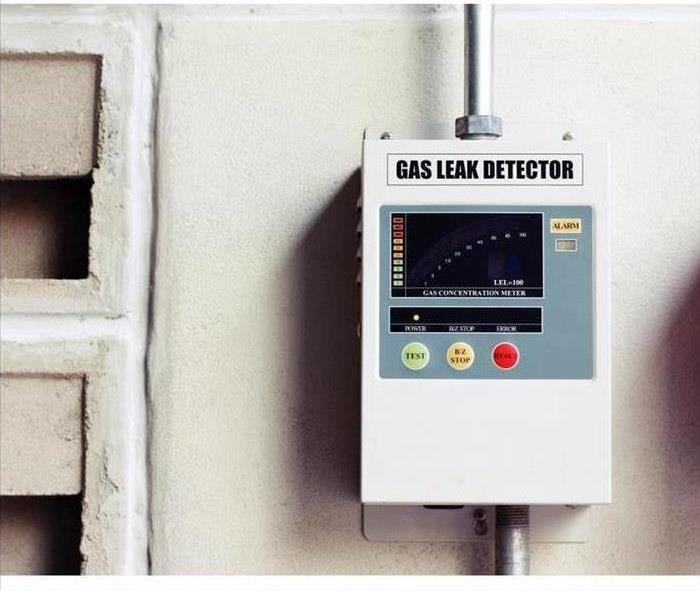 A gas leak in your Guthrie, OK, home could be dangerous
A gas leak in your Guthrie, OK, home could be dangerous
A gas leak in your Guthrie, OK, home could be dangerous. While the natural gas you use for cooking isn't toxic, it is incredibly flammable. It could thus cause a gas fire or even a gas explosion. You thus need to address the issue as soon as possible.
Signs of a Gas Leak
While the gas itself is not visible, there are some easy ways to tell whether there is excess gas in your home. You just need to use your eyes, nose, and ears. Any of the following could be evidence of a gas leak:
- The sound of hissing from an appliance or pipe
- The smell of sulfur or rotten eggs
- The appearance of bubbles in wet areas
The Proper Response
The gas you smell may simply be coming from your stove. Check to see if someone accidentally left on one of the burners.
If that is not the cause of stench, then you likely have a gas leak. Your next step should be opening the doors and windows of your home. This will ventilate the area and allow the gas to leave the building.
To prevent a gas fire, avoid using any electronics or phones inside the house. You should not light any matches or turn on appliances, either. Instead, you should evacuate the property and dial 911. You may also want to shut off your gas meter if you know how to do so.
Prevention and Mitigation
Once it is safe to go back into your house, you can take steps to prevent gas problems in the future. Make sure to check your exhausts and change your furnace filter regularly. You should also store contact information for your local emergency restoration professionals, just in case a gas fire does occur.
If you smell rotten eggs in your home, act quickly to prevent a devastating blaze or explosion. Ventilate your home immediately and get you and your family to safety.
Creating a Serious Plan
6/25/2024 (Permalink)
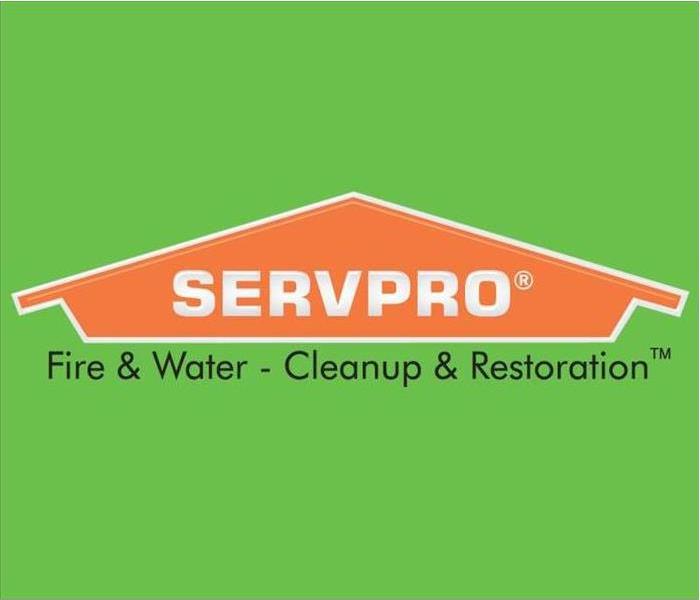 The business owner needs to think about the many ways they make sure this problem never happens to them again.
The business owner needs to think about the many ways they make sure this problem never happens to them again.
It is imperative to create a plan after commercial fire damage by a firefighter and a fire suppression system. Fire restoration efforts must be all about fully getting rid of any smoke damage, soot damage, and lingering fire damage from all areas of the property. The plan needs to be about working to figure out specifics.
A business owner may have found that a fire sprinkler system went off by accident and did not stop causing water damage to multiple areas of the space. They also may find that the fire sprinkler system was also in place and set off by firefighters walking across the property. Any owner needs to keep in mind that the professionals they hire for the clean up may need a great deal of time in order to complete the project.
The complete cleanup efforts should also be about putting into place efforts that can help assist any business owner with making sure they can open up space again with as little loss of revenue as possible. It's important to think as long-term as possible. The business owner needs to think about the many ways they make sure this problem never happens to them again. When a plan is put into place to help prevent future fires, this allows the business owner to think about the many ways they can fireproof all parts of their business. Any business owner should have a long-term fire reaction plan in place.
3 Steps To Mitigate Roof Damage To Your Home
6/25/2024 (Permalink)
 It’s a good idea to pay attention to what the weather is doing in your area
It’s a good idea to pay attention to what the weather is doing in your area
Consider These Three Steps
When you live in an area such as Sumner, OK, you may be worried about the local weather causing roof damage to your home. Fortunately, a storm damage restoration service can help with any repair needs you may have. However, there are a few things you can do beforehand to mitigate potential problems. Next time there’s a storm in your area consider these three things.
1. Pay Attention To the Weather
It’s a good idea to pay attention to what the weather is doing in your area. This will help you have time to prepare properly before a storm occurs. If you’re expecting heavy wind or rain you can take steps such as covering over areas of your roof that may be prone to damage with tarps or boards until a professional can make repairs. You may also want to check for debris or loose gutters that could also be knocked around by the weather and damage your roof.
2. Clean Out Your Gutters
You may also want to take the time to clean out your gutters as this also can help prevent roof damage to your home. Debris such as sticks or leaves can clog the gutter and lead to water backup. This water can then overflow onto the roof and cause problems. When the gutters are clean and the downspouts pointed away from the building, this potential issue is much less likely to occur.
3. Trim Back Overhanging Trees
Another way to help mitigate wind damage to your home’s roof is to trim back any trees that might overhang. Look for weak or dead branches that could be knocked loose by the wind. During a storm, these have the potential to fall on the roof causing damage. Taking the time to remove them beforehand may help mitigate the problem.
If you’re trying to mitigate storm caused roof damage to your home you may want to consider keeping an eye on the weather, keeping your gutters clear of debris and taking the time to trim back any overhanging trees. If damage does occur, a restoration service can help with any clean up and repair needs.
Indoor Environmental Specialists Play a Role in Controlling Mold You Can't See
2/13/2024 (Permalink)
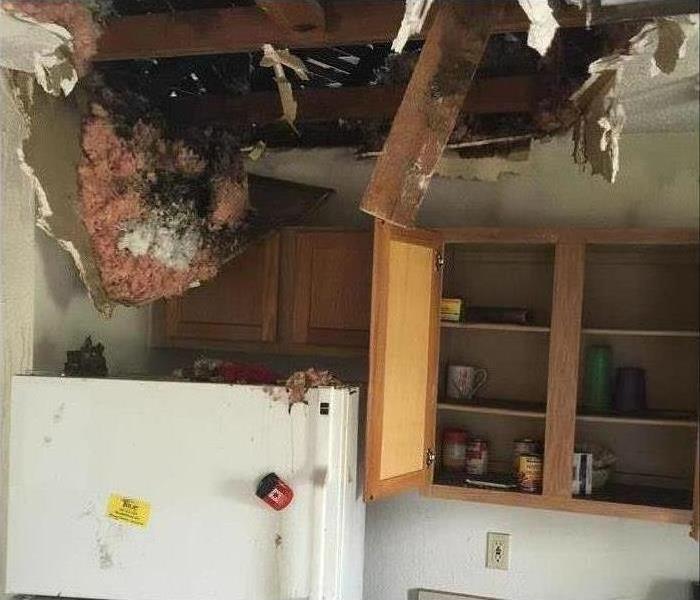 As a property owner or manager, concern over mold growth may one of your top priorities.
As a property owner or manager, concern over mold growth may one of your top priorities.
As a property owner or manager, concern over mold growth may one of your top priorities. Any dark, humid space with a suitable organic substance can provide the ideal breeding ground for this intruder. Unfortunately, those organic substances are plentiful in the walls, ceilings, and floors of any property. One common problem for commercial property owners is that mold can become a problem before there's any visible proof of its existence. This is where an indoor environmental specialist comes in.
What These Professionals Do
According to the Institute of Inspection, Cleaning, and Restoration Certification and other national and international professional agencies, the work of an indoor environmental professional includes the following:
- Assessing fungal ecologies on the property, including systems and contents
- Creating sampling strategies
- Sampling the indoor environment
- Interpreting data
- Determining the course of corrective action
Many states have initiated standards and exams that professionals must adhere to before they can claim the title of an indoor environmental specialist. This move helps property managers feel confident in the work of the technicians.
A Hidden Threat to Your Properties
The unfortunate truth is that by the time you see visible evidence of mold growth, the problem could be widespread. Don't wait to see those black spots or to smell unpleasant odors before scheduling a mold test. Professionals in Perry, OK should visit your properties annually, at least, to make sure your properties aren't hosting unwanted colonies of mold and mildew.
A Combination of Understanding and Professional Efforts
The more you know about mold, the better you can control the environmental factors that support its growth. As you learn more about the conditions that spread spores and cause mold to thrive, you can take any necessary steps to prevent further trouble. An indoor environmental specialist is a key player in these actions. Schedule routine inspections and be sure to carry out the strategies that professionals recommend for the protection of your Perry, OK properties.
Differences Between Grey and Black Water
1/3/2024 (Permalink)
 Black water in Stillwater, OK
Black water in Stillwater, OK
What Type of Water Has Appeared After a Flood in Your Home?
The level of concern you should feel after a flood inside your home depends on what type of water has appeared. There is white water, which is plain, clean water with little to no contaminants. You should be able to tell when water is contaminated based on the color and odor, and you should never attempt a DIY fix without professional guidance. Contact professionals in Stillwater, OK who know how to safely handle water damage caused by grey or black water.
Grey Water
Grey water refers to liquids that come out from pipes and other structures that does not contain human waste. This water may contain:
- Fats
- Oils
- Soap particles
- Hair
While this does result in a certain amount of contamination, it is not as severe as it could be, and there is less of a risk of people in the vicinity suffering from health problems caused by exposure. If your household uses natural, biodegradable soaps free or boron, chlorine and sodium, then you will have even less to fear. However, if left untreated, this type of water can slowly grow worse.
Black Water
Water damage from black water is a severe problem that needs to be addressed immediately. When flooding occurs due to a blockage in the sewer system, drains in your house will bring up water contaminated by fecal matter and pathogens. A professional team will need to be brought in to safely remove the waste and the affected drywall.
When you discover water backing up into your home, you need to take prompt action to handle it right away to curtail a disaster. If you cannot tell where the water came from or if it has darkened in color even in the slightest, then you should avoid touching it, because you could end up hurting yourself. Instead, leave water damage remediation in Stillwater, OK to the professionals.
Visit http://www.SERVPROstillwaterguthrie.com for more information on storm damage.



 24/7 Emergency Service
24/7 Emergency Service









